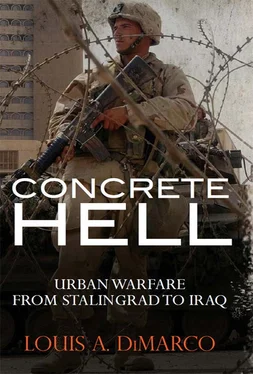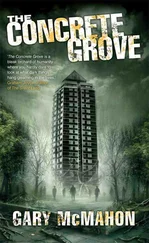Through the 19th century the confluence of technology and the changing nature of cities were also making urban combat and sieges less common. Beginning at the end of the 17th century, many cities began to change their design, and the fortress city became less common. This process was gradual; but by the beginning of the 20th century, the fortress city was recognized as obsolete and had essentially disappeared. This was the result of several factors. For several hundred years after the Middle Ages, city populations were relatively stable, but urban populations began to increase rapidly in the late 18th century. The walled cities began to experience significant crowding and suburbs of the city began to expand beyond the city walls, making the effectiveness of the walls questionable. Additionally, during the 18th century, cities in the interior of stable nation-states were not deemed sufficiently threatened to maintain their expensive fortification. Countries such as France intentionally allowed specific city fortifications to erode. Finally, by the time of the Franco-Prussian War in 1870, modern rifled artillery was able to reduce most city fortifications from a range of nearly two miles.
At the same time that artillery technology was improving, advances in small-arms technology occurred. Rifled repeating arms made small groups of infantry much more lethal. Small-arms technology radically changed infantry tactics. In an urban area, these developments had the effect of turning individual buildings manned by small groups of soldiers into miniature fortresses. Groups of buildings became mutually supporting defensive networks. These man-made defensive networks were much less homogenous than the city wall and hence a much more difficult target for the artillery. Additionally, the lethality of infantry meant that the integrity of the urban defense was not destroyed by a breach of the walls. Defenders now had the capability of defending effectively throughout the depth of the urban environment — a technique impossible when infantry tactics relied on massed close-knit formations to achieve effective firepower. By the end of the 19th century, the pressure of urban population growth, the effectiveness of rifled artillery, and the firepower of breech-loading rifles and machine guns led to the obsolescence of the protective city wall, and resulted in the capability to defend from within individual city buildings and blocks of buildings. The tactical challenge of the fortified building moved the urban battle from the city wall to the city streets.
Commanding generals continued to pursue the objective of the open-field battle into the 20th century. However, decisive open battle was less common as armies got much bigger, warfare became global, and technology added many more dimensions to warfare including mechanized fighting vehicles and airplanes. The size of armies and the complexity of war made decisive single open-field battles a thing of the past. World War I demonstrated that the lethality of the battlefield literally overwhelmed the capacity of armies to maneuver and attack decisively. This had the interesting effect of making urban battle essentially irrelevant. Those small towns and cities which happened to be in the way of World War I combat, particularly after 1914, were simply obliterated by the massive and sustained artillery bombardments which typified all operations in the war. The first two years of World War II, the years of the Nazi Blitzkrieg, seemed to indicate that sweeping gigantic battles of maneuver — Napoleon on a grand scale — might be the new major characteristic of modern war. But in fact, World War II marked the end of a relatively short period in military history where open-field battle dominated the employment of military force. Discrete field battles occurred in World War II. Most often those battles took place in and around cities and proved to be operationally decisive. World War II commanders, seeking to fight in the open whenever possible, bypassed major urban areas with their armored spearheads whenever possible. However, eventually, either the city could not be bypassed, as at Stalingrad, or the presence of the bypassed enemy could not be tolerated. Then warfare reverted to combat in the city. Since World War II, warfare has returned to its historically traditional locale, the urban battle space, with increasing frequency. This is because, as modern armies try to be more and more precise in their application of violence they focus more and more on what is absolutely critical, and the urban centers are natural strategic and operational decisive points.
World War II established modern urban battle tactics. In the years since World War II tactics have evolved but not changed dramatically. During the Cold War, modern armies encountered traditional foes in urban combat situations very reminiscent of World War II. Cold War urban battles in places like Korea and Vietnam looked very much like the World War II experience. However, modern armies have also encountered enemies that have not been armies in the traditional sense, but rather urban insurgents. Urban insurgency emerged during the Cold War and required that modern armies build on traditional urban tactical techniques and combine them with an entirely new understanding of warfare. The French in Algeria and the British in Northern Ireland pioneered the experience of 20th-century armies fighting urban insurgents amid a large civilian population.
The first years of the 21st century continued the trend of more and more combat centered on large urban centers and their populations. Recent combat has demonstrated that the world’s cities may well be more the focus of operations than at any time in history. Certainly the evidence of the first decade of the 21st century is that enemies of modern armies will seek out the urban battlefields for a variety of compelling reasons. The urban battle space gives — as it always has done — maximum physical advantages to the defender; the physical environment tends to mitigate many technological advantages held by the attacker; the presence of civilians can greatly complicate the operations of attacking forces, while sometimes also providing cover and concealment to the defender; and it opens the battle to modern media scrutiny. The beginning of the 21st century also revealed that the experiences in conventional and unconventional combat of the last half of the 20th century provide a good guide to the tactics and techniques necessary for success against dedicated and deadly urban enemies of all types. Thus, it seems that understanding the future of war in the 21st century requires an understanding of the history of modern urban combat as demonstrated in the key city battles since World War II.
CHAPTER 2
AN OPERATIONAL DEBACLE
Stalingrad, 1942
Stalingrad is the most famous urban battle in history. It was one of the most decisive battles of World War II and established much of the public and professional military’s view of urban combat. Some of the lessons of Stalingrad are myths, and some of them are unique to the Stalingrad battle; however some remain standards of urban combat today and the battle is a worthy starting point for the study of urban combat. The positive aspects of the battle are virtually all on the Soviet side. On the German side, in contrast, the battle provides multiple lessons for how to attack a city in precisely the wrong way. At the tactical level, the battle demonstrated many of the truisms of urban combat, but it also established many of the myths of war in a concrete jungle.
The major event of World War II in 1941 was the German attack on the Soviet Union, Operation Barbarossa. The campaign, which lasted through the summer, fall and into the depths of the winter, is one of the most studied and analyzed in military history. One of the critiques of Operation Barbarossa was that it was a strategic failure because it was not a focused attack. The Germans failed to identify a single main effort, and instead they attacked across the entire front of the Soviet Union’s western border. This lack of focus meant that, though the Germans captured immense amounts of territory and destroyed huge numbers of Soviet forces, the 1941 offensive failed to accomplish anything strategically decisive and Germany entered 1942 in a very precarious situation: not only had they provoked and wounded the Russian bear, but also, in December 1941, Germany declared war on the United States. Thus, it was imperative that Germany not only win battles in 1942, but ensure that those battles, once won, led to decisive strategic victory.
Читать дальше












